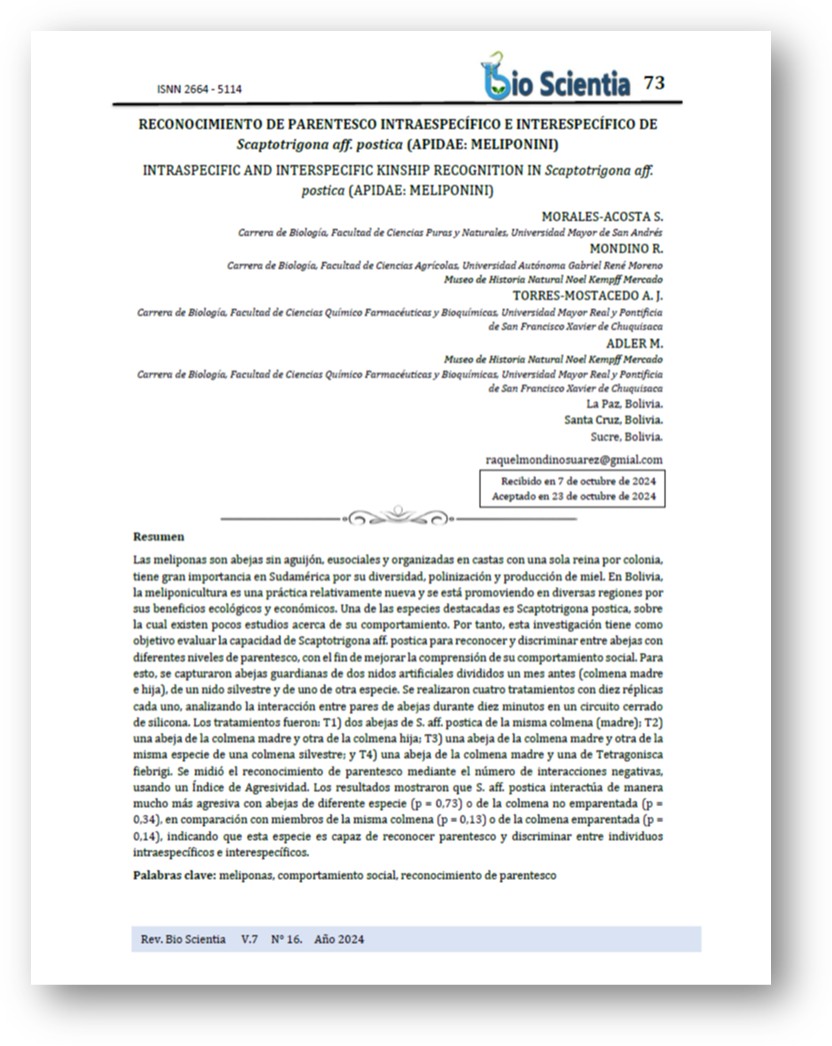INTRASPECIFIC AND INTERSPECIFIC KINSHIP RECOGNITION IN Scaptotrigona aff. postica (APIDAE: MELIPONINI)
Keywords:
kin recognition, social behavior, stingless beesAbstract
Melipona bees are stingless, eusocial and organized in castes with only one queen per colony, and are of great importance in South America for their diversity, pollination and honey production. In Bolivia, meliponiculture is a relatively new practice and is being promoted in several regions for its ecological and economic benefits. One of the most important species is Scaptotrigona postica, about which there are few studies on its behavior. Therefore, this research aims to evaluate the ability of Scaptotrigona aff. postica to recognize and discriminate between bees with different levels of relatedness, in order to improve the understanding of their social behavior. For this purpose, guard bees were captured from two artificial nests divided one month before (mother and daughter hive), from a wild nest and from a nest of another species. Four treatments with ten replicates each were performed, analyzing the interaction between pairs of bees for ten minutes in a closed silicon circuit. The treatments were: T1) two S. aff. postica bees from the same (mother) hive; T2) one bee from the mother hive and one from the daughter hive; T3) one bee from the mother hive and one of the same species from a wild hive; and T4) one bee from the mother hive and one from Tetragonisca fiebrigi. Kinship recognition was measured by the number of negative interactions, using an Aggressiveness Index. The results showed that S. aff. postica interacts much more aggressively with bees of different species (p = 0.73) or from the unrelated hive (p = 0.34), compared to members of the same hive (p = 0.13) or from the related hive (p = 0.14), indicating that this species is able to recognize relatedness and discriminate between intraspecific and interspecific individuals.



